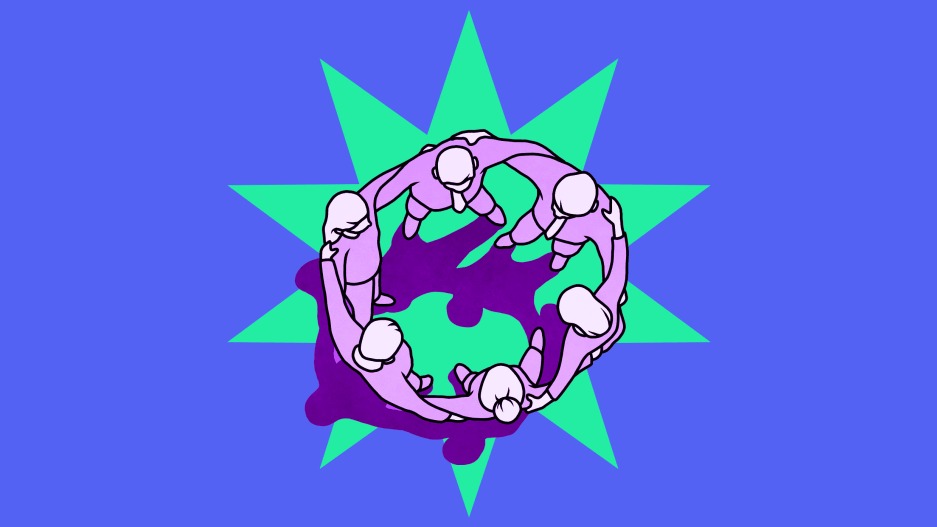- | 8:00 am
You can build a dream team. Here are 5 ways to attract and retain the top performers
With these practices in play, teams of all types can become super without the bickering.

If you’re a sports fan—or even just someone who follows the zeitgeist— what team comes to mind as the best example of a “dream team?”
Chances are it’s the 1992 U.S. Olympic basketball team, which included Michael Jordan, Larry Bird, Patrick Ewing, Scottie Pippen, and Magic Johnson. Journalists called it the greatest sports team ever assembled. It was a rare occurrence when the best of the best came together, where nobody was average or even above average.
When this happens, the results can be extraordinary to watch. Yet, when it comes to organizations, there’s a widely held belief that it’s neither realistic nor desirable to have a team of only top performers.
In an oft-cited study, biologist William Muir sought to increase hen productivity by identifying birds that laid the most eggs—“super chickens” —and housing them together. But instead of urging each other to greater heights of egg production, all but three hens pecked each other to death in a ghastly competition for status.
In the organizational world, the idea you shouldn’t put more than a few top people together on a team has stuck. Following this line of thinking, it’s only logical that “average performers” are seen as necessary to get work done.
To this end, many organizations have systems that actively work against having a dream team. For example, traditional performance management assumes a normal distribution, where some people are top performers, some are bottom, and the majority are doing okay. Leaders expect this kind of distribution and hire accordingly. Many performance management systems would implode if they tried to differentiate pay among people who are all exceptional, for example.
However, as we move into an era where much of the easier work is likely to be automated through AI, it’s not so hard to imagine a time when fewer people will be needed to do the same job. And the quality of those people will have a much bigger impact. If AI allows you to cut your salesforce from 50 people to 10, you’d better ensure those 10 are the very best with customers, because they’ll become the face of client interaction for your company.
Additionally, as layoffs and downsizing have arrived, with blue-chip firms such as Amazon, Goldman Sachs, and Google letting go of thousands of workers, wouldn’t you want to be left with only the best possible people on the team? It made us wonder, is it time to reevaluate the super chicken theory?
THE UPSIDES TO GOING SUPER
The super chicken study convinced many organizational leaders that it’s a bad idea to have a lot of high performers on the same team. After all, who wants their employees to peck each other to death? This way of thinking is an example of a “safety bias,” where we focus on the salient downsides of an issue and don’t dig into the sometimes less visible upsides. This bias leads us to imagine nasty, ultra-competitive battles for status, which overpower our ability to consider the upsides.
However, leaner doesn’t have to be meaner. We believe it’s possible to have all (or close to all) high performers through a combination of only hiring top people, retaining them well, and developing them effectively.
Through this, a range of benefits are possible. These include accelerated performance—so long as you have a diverse and inclusive culture in which people feel safe to speak up—and attracting other top talent, which, in turn, will improve retention.
What’s more, companies that focus on high performers can also save money in reduced turnover and accelerated performance that leads to better financial outcomes and a reduced need for oversight; in a team of top talent, you can empower the team to make decisions and lead projects without the need for bureaucratic oversight. This reduction in red tape means the organization can move faster.
All this sounds good in theory. The question is, how do you do it? We’ve broken it into five key practices.
ENCOURAGE A GROWTH MINDSET
While you want to carefully assess potential talent before hiring, once they’re on board, it’s important to have a growth-mindset culture. This means you give people room to stretch, take on challenges, and even make mistakes. If you focus solely on performance, you don’t give people the chance to shine because they feel they must always perform perfectly. This is a dangerous path, as it creates a fixed-mindset culture. Great performers don’t always arrive fully formed; many will be developed because they show potential and are given growth opportunities.
HIRE SLOWLY
Hiring slowly means anticipating hiring needs well ahead of time and building a strong pipeline of good people so there’s less urgency to hire at the last minute. This gives you a chance to truly assess people’s potential in various ways, including cognitive and other assessments, or perhaps give them small projects to see how they work. It also means holding out for the right person and never lowering the bar.
FIRE QUICKLY
Netflix is famous for using what’s called the “keeper test.” In this thought experiment, a manager imagines someone is leaving the team: Would you fight to keep them or be relieved they’re gone, freeing you up to find a stronger employee? Many organizations keep average and below-average performers for too long, assuming they need them or because it’s hard to let people go.
GIVE FEEDBACK CONTINUOUSLY
Continuous feedback is a key component to improving performance, as well as for getting readouts on people’s potential. Instead of giving feedback on a quarterly (or even less frequent) basis, create a robust feedback culture that centers on continuous learning. Rather than tasking managers to give feedback and direct reports to receive it, employees at every level should get in the habit of regularly requesting feedback. Research shows that when someone asks for feedback, the experience is less stressful for both the giver and the receiver.
ENCOURAGE DEEP COLLABORATION
A deep focus on collaboration can avert battles for status. Focusing on collaboration is the key to having top performers work together rather than against each other. When companies hire, promote, and compensate based on an employee’s ability and willingness to collaborate, everyone puts “we” before “me.”
We believe it’s not just possible to have teams full of top performers, but it’s also deeply beneficial. That said, getting there requires a series of deliberate steps. With these practices in play, teams of all types can become super without the bickering—at whatever level of business or sport they partake.







































